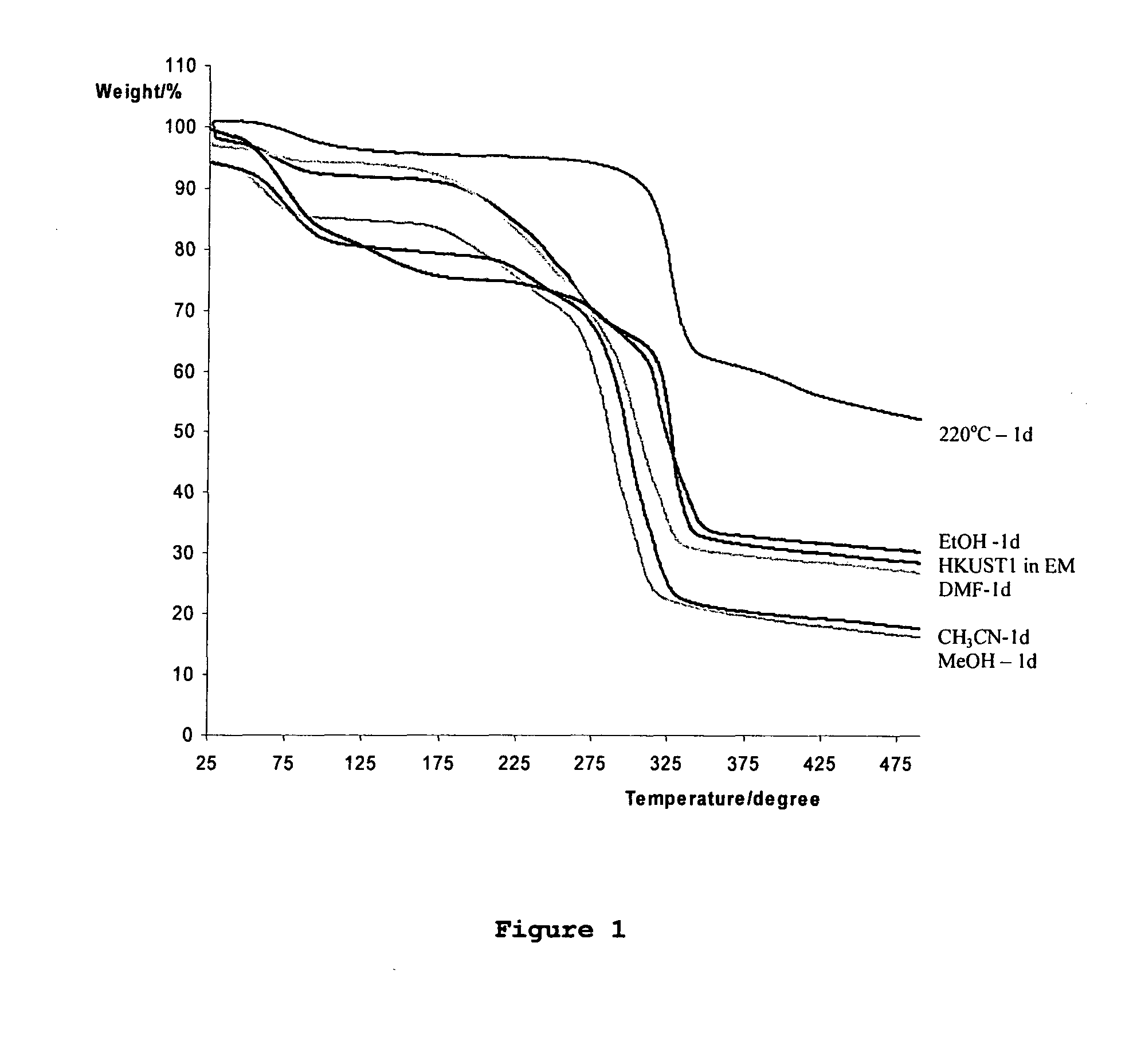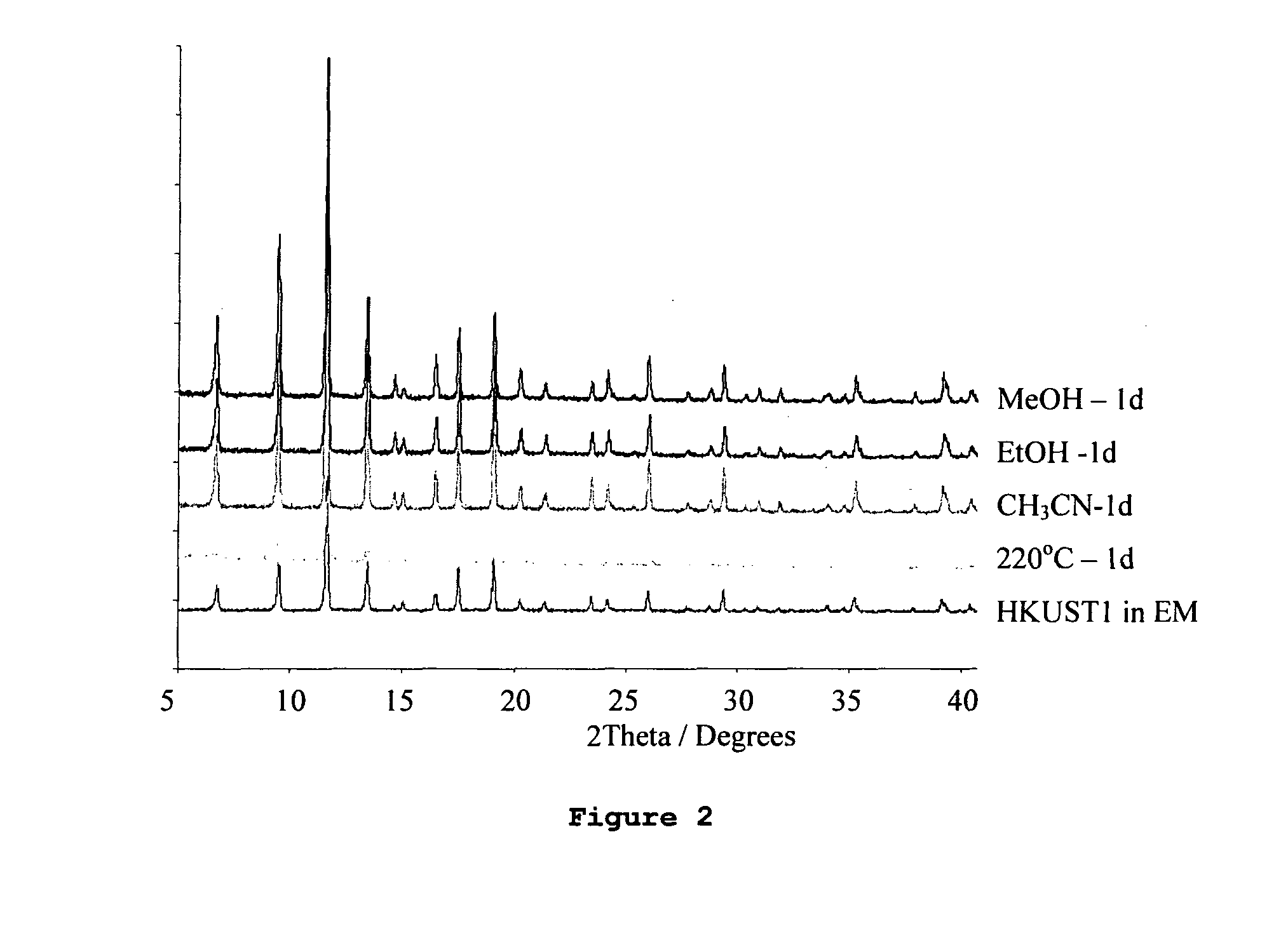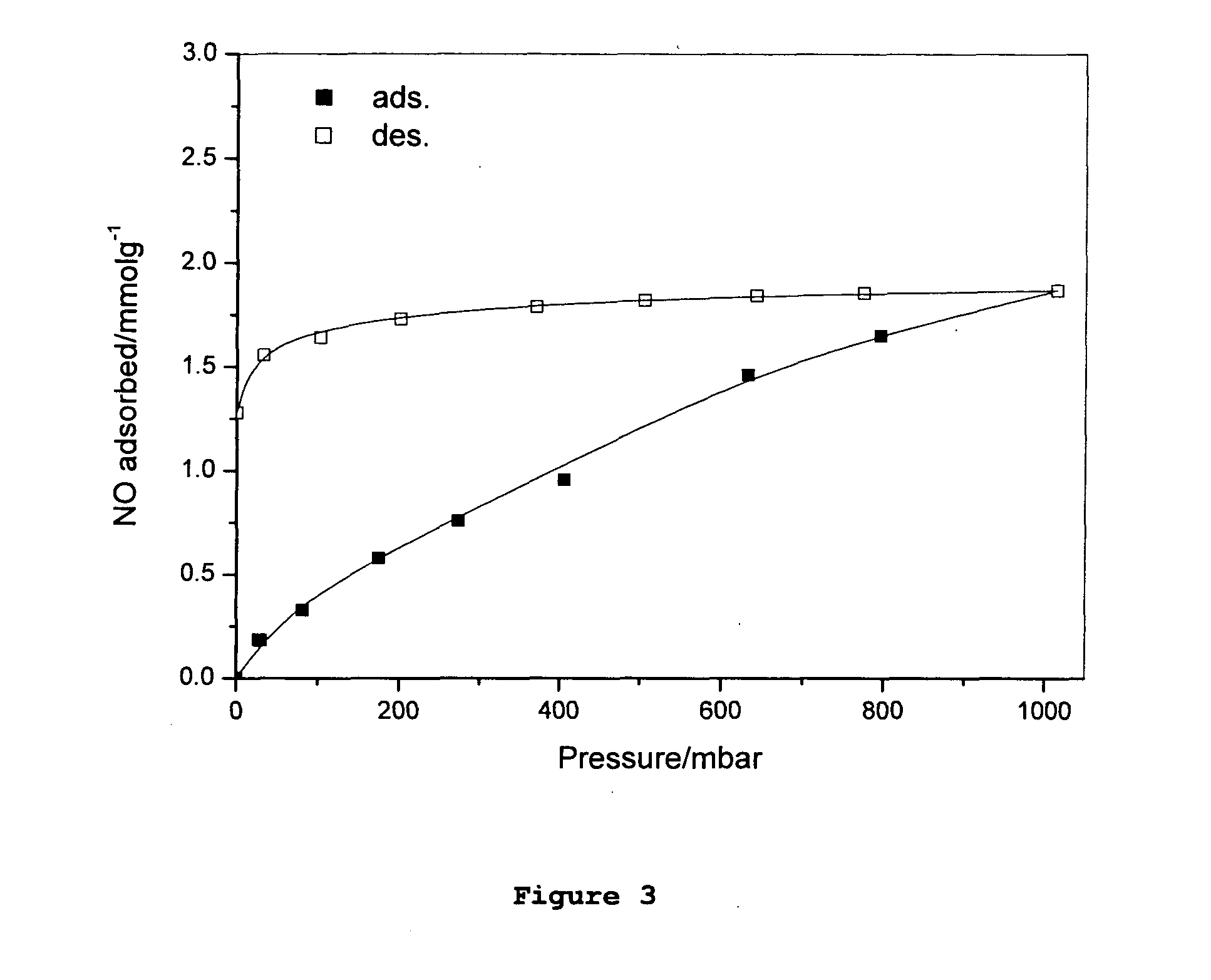Adsorption and release of nitric oxide in metal organic frameworks
a metal organic framework and nitric oxide technology, applied in the field of metal organic frameworks, can solve the problems of difficult ex vivo and in vivo delivery of nitric oxide, difficult to achieve optimal dose, so as to reduce the effect of restlessness
- Summary
- Abstract
- Description
- Claims
- Application Information
AI Technical Summary
Benefits of technology
Problems solved by technology
Method used
Image
Examples
example 1
A New Metal Organic Framework, HKUST-EM, its Synthesis and No Adsorption Properties
[0165]This is a new material synthesised using a eutectic mixture ionic liquids (Choline Chloride / urea) as both the solvent and the template. This is the first metal organic framework porous material to be prepared using this type of synthesis. The structure is similar in size and porosity to the CU(BTC) structure described below. However, the choline chloride / urea eutectic mixture undergoes a decomposition reaction under the synthesis conditions and so the final material occludes NH3, which markedly affects some of its properties (particularly its thermal and activation properties). Combined thermogravimetric and mass spectroscopic analysis indicates that the material contains NH3 groups, and IR studies suggest that the NH3 is bound to the metal ions. The overall composition of the material is Cu3(BTC)2(NH3)3x(H2O)3-3x.n(Guest) where BTC=benzene tricarboxylate and Guest species are any molecules pres...
example 2
Adsorption of NO on Copper-1,3,5 Benzene Tricarboxylate (CuBTC) Metal Organic Frameworks
[0177](a) Synthesis of CuBTC (Cu3(BTC)2(H2O)3)
[0178]In a typical synthesis, 3.0 mmol of Cu(NO3)2.3H2O (0.716 g) and 2.0 mmol of benzene 1,3,5-tricarboxylic acid (0.421 g) was mixed with 12 ml of EtOH / H2O (50:50) solution in a Teflon-lined autoclave. The mixture was stirred for 30 mins at ambient temperature before heated. The autoclave was heated at 383 K for 24 hrs, and then cooled down to room temperature. The blue product was sonicated and washed by EtOH / H2O (50:50) solution, isolated by filtration and dried in air.
[0179]The crystalline nature of the product was identified using powder X-ray diffraction and the framework structure was found to be isostructural to the material HKUST-1 reported by Chui et al. (Science, 283, 1148-1150, 1999). However, gas adsorption experiments using nitrogen gas (77K) and carbon dioxide (273 K) indicated that the pore volume of this material was significantly gr...
example 3
Adsorption of NO on Chromium-1,3,5 Benzene Tricarboxylate (CrBTC) Metal Organic Frameworks
[0185](a) Synthesis of CrBTC Cr3F(H2O)2O(BTC)3.nH2O (where BTC=Benzene Tricarboxylate and n ˜20-25)
[0186]In a typical synthesis metallic chromium (52 mg, 1 mmol) was added to an aqueous solution of 5 M hydrofluoric acid (0.4 mL, 2 mmol). After the addition of 1,3,5-benzene tricarboxylic acid H3BTC (150 mg, 0.67 mmol) and H2O (4.8 mL, 265×10−3 mol), the mixture was heated in a Teflon-lined steel autoclave at 220° C. for 96 h. After cooling to room temperature the product was washed with deionized water and acetone and dried in air. The product was identified by powder X-ray diffraction as being isostructural with MIL-100 (Ferey et al, Angewandte Chemie International Edition, 43, 6296-6301, 2004).
[0187](b) NO Adsorption / Desorption
[0188]The adsorption / desorption of nitric oxide gas in Cr-BTC was measured using a gravimetric adsorption system. A CI instruments microbalance was thermally stabilized ...
PUM
| Property | Measurement | Unit |
|---|---|---|
| temperature | aaaaa | aaaaa |
| pressure | aaaaa | aaaaa |
| temperature | aaaaa | aaaaa |
Abstract
Description
Claims
Application Information
 Login to View More
Login to View More - R&D
- Intellectual Property
- Life Sciences
- Materials
- Tech Scout
- Unparalleled Data Quality
- Higher Quality Content
- 60% Fewer Hallucinations
Browse by: Latest US Patents, China's latest patents, Technical Efficacy Thesaurus, Application Domain, Technology Topic, Popular Technical Reports.
© 2025 PatSnap. All rights reserved.Legal|Privacy policy|Modern Slavery Act Transparency Statement|Sitemap|About US| Contact US: help@patsnap.com



